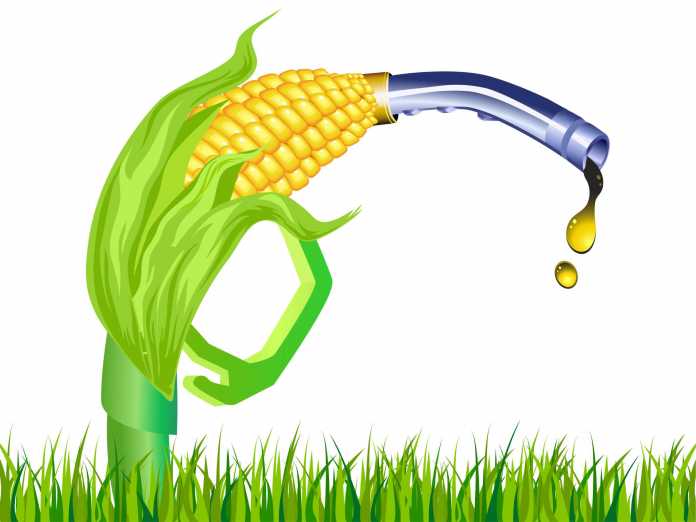An article from Time Magazine’s online news site points out that corn ethanol fuel used as a gasoline additive or replacement is not as environmentally friendly as proponents claim. Time is correct. Research shows that not only does the promotion of corn ethanol-blended fuel lead to land use and crop pricing issues, but it also may actually increase the emissions that climate activists are trying to reduce.
The article, “Politicians Are Touting Corn Ethanol as a Climate Solution. The Truth Is More Complicated,” explains how hundreds of millions of dollars in the Inflation Reduction Act are going towards further investment in higher-ethanol content gasoline infrastructure.
Time staff writer Alejandro de la Garza writes that “while ethanol proponents have touted the fuel as a way to lower gas prices and help tackle climate change, many environmentalists and scientists say those measures are just a way of locking in higher corn prices while actually making the climate situation worse.”
De la Garza discusses a short overview of recent ethanol mandates and funding, and the land use issues pointed out by environmentalists. Primarily, that increased mandates for blending ethanol into fuel prompts farmers to plant more land with corn in particular. This has the effect of raising crop prices, and has a potentially net-negative impact on emissions, De la Garza says.
These claims have proven true, and have been shown time and again in research going back decades. Climate Realism has touched on this issue in multiple posts, here, here, and here, for example, showing that it’s not just corn ethanol biofuel that has proven to be a problem for the environment.
In Brazil, for example, one study shows that demand for ethanol fuel has caused increasing encroachment of sugarcane and soybean plantations into once-protected Amazon rainforest and wetlands.
The study authors explain in the abstract that ethanol biofuel made from sugarcane and biodiesel made from soybeans “each contribute to nearly half of the projected indirect deforestation of 121,970 km2 by 2020, creating a carbon debt that would take about 250 years to be repaid using these biofuels instead of fossil fuels.”
The U.S. Department of Agriculture said in 2007 that they expected corn prices to rise, and continue to rise, so long as the demand for corn ethanol biofuel keeps increasing.
Additionally, De la Garza writes about the failure of cellulosic biofuel—or biofuel made from the woody stems and other material of plants—to develop economically. It is true that, although the EPA’s Renewable Fuel Standards program demands increasing amounts of cellulosic biofuels to be blended into gasoline, the technology just has not worked out. This has forced EPA to hand out waivers so fuel blenders are not fined for failing to incorporate non-existent cellulosic fuel into their blends.
What Time misses, though, is the fact that the fuel itself is not very likely a lower emissions fuel than normal gasoline. A study done by The Heartland Institute, “Ethanol and Biodiesel: Few Benefits, Many Problems” shows that while ethanol produces less CO2 per gallon fuel, ethanol also has a significantly lower energy density. This means more fuel is required to go the same distance as a gasoline car. When emissions are calculated per unit energy instead of per unit volume of fuel, ethanol produces about 4.05 kg CO2 and gasoline produces about 3.30 kg.
The study also found that ethanol biofuels produce more ground-level ozone pollution, as well as other air pollutants like PM2.5, NOx, and SOx.
Time is correct to question the motivation and science behind government corn ethanol mandates. While Climate Realism is not overly worried about carbon dioxide emissions, it makes no sense for climate activists to throw their weight behind a net-higher emitter like corn ethanol. The impact that mandates have on the price of a main food staple like corn, land use, and legitimate localized air pollution is reason enough to share some common ground.

















Time is also very late to this party. This is hardly a startling new revelation.
Ethanol blends have killed thousands of Americans from vehicle fires. There are hundreds of deaths per year from vehicle fires, and many are caused by the ethanol deteriorating fuel lines, that leak and catch the vehicle on fire. RV’s are particularly vulnerable.
Right on target article. FEBRUARY 4, 2013 Corn Ethanol: Bad For Farmers, Consumers And The Environment
By driving up the price of food and gas and causing costly engine damage, corn ethanol has been bad news for consumers.
http://www.ewg.org/agmag/2013/02/corn-ethanol-bad-farmers-consumers-and-environment